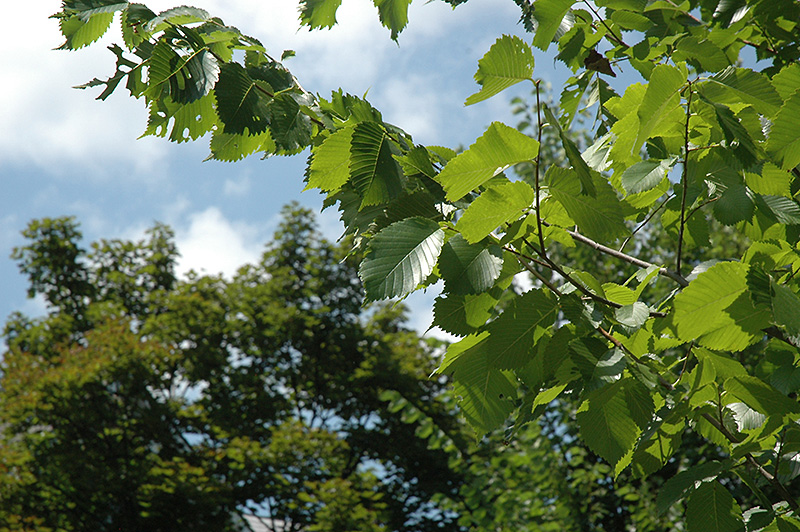Plant Finder
Height: 70 feet
Spread: 50 feet
Sunlight:
![]()
Hardiness Zone: 3
Other Names: American Elm, Water Elm, Gray Elm, Swamp Elm
Description:
Indisputably the most ornamental of all shade trees, a stately vase-shaped specimen, the ultimate street tree forming an overhead arch, very hardy and extremely adaptable; resistant to Dutch elm disease
Ornamental Features
Princeton Elm is primarily valued in the landscape for its ornamental globe-shaped form. It has dark green deciduous foliage. The large serrated pointy leaves turn an outstanding gold in the fall.
Landscape Attributes
Princeton Elm is a deciduous tree with a more or less rounded form. Its relatively coarse texture can be used to stand it apart from other landscape plants with finer foliage.
This is a high maintenance tree that will require regular care and upkeep, and is best pruned in late winter once the threat of extreme cold has passed. Gardeners should be aware of the following characteristic(s) that may warrant special consideration;
- Disease
Princeton Elm is recommended for the following landscape applications;
- Shade
Planting & Growing
Princeton Elm will grow to be about 70 feet tall at maturity, with a spread of 50 feet. It has a high canopy of foliage that sits well above the ground, and should not be planted underneath power lines. As it matures, the lower branches of this tree can be strategically removed to create a high enough canopy to support unobstructed human traffic underneath. It grows at a fast rate, and under ideal conditions can be expected to live to a ripe old age of 100 years or more; think of this as a heritage tree for future generations!
This tree should only be grown in full sunlight. It is an amazingly adaptable plant, tolerating both dry conditions and even some standing water. It is not particular as to soil type or pH, and is able to handle environmental salt. It is highly tolerant of urban pollution and will even thrive in inner city environments. This is a selection of a native North American species.
Disclaimer - Rutgers Landscape & Nursery Plant Finder is an online resource representing many of the varieties that we carry over the course of the season, and is intended for informational purposes only. Inventory varies seasonally, so we cannot guarantee that every plant will be in stock at all times - please contact Rutgers directly for current availability.


